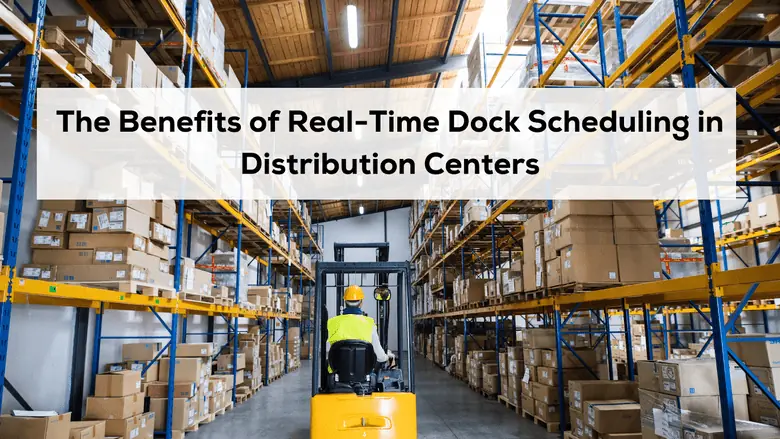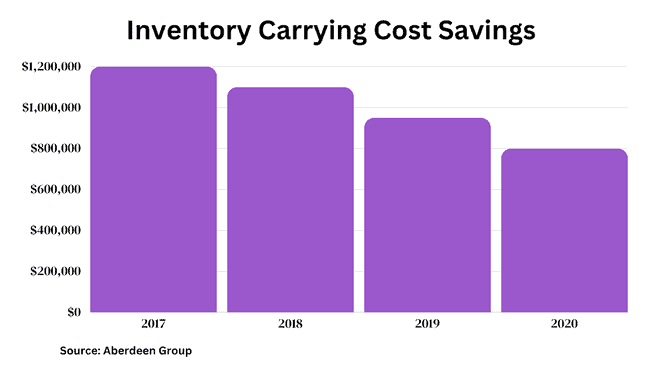The Benefits of Real-Time Dock Scheduling in Distribution Centers

Retailers typically operate on thin profit margins. Meanwhile, the shareholders appreciate money saved from anywhere. After all, it adds to the company’s bottom line. This makes dock scheduling a crucial and highly desirable component of logistics. Distribution centers, warehouses, and stores all require it to efficiently manage the flow of goods.
However, dock scheduling processes often suffer from inefficiencies and delays. These processes often encounter bottlenecks that result in revenue losses and frustrated customers. Not to mention, they waste a lot of resources too.
Yet, efficient dock scheduling can offer significant opportunities for companies. Especially if they want to improve their supply chain operations. It also contributes to minimizing costs and enhancing customer satisfaction. This article aims to showcase the benefits and advantages of using real-time dock scheduling. It will present how such solutions can improve warehouse operations and supply chain performance.
Defining Dock Scheduling
It sounds self-explanatory but the article will discuss it in a little more detail. Dock scheduling refers to the allocation of certain time slots for trucks that will load or unload goods. This functionality ensures that loading docks are efficiently used. It also minimizes wait times and streamlines overall warehouse operations.
While the definition sounds basic, it holds the power to transform logistics and docking operations. Having an efficient dock scheduling system can significantly impact a business and its supply chain.
The Role of Dock Scheduling in Efficient Distribution
Dock scheduling points out and avoids potential bottlenecks and inefficiencies from uncoordinated trucks. Imagine if many trucks arrive at the same time in one warehouse. Each one is expecting to unlock or pick up products. It will be chaotic. There will be conflict regarding dock space and delayed shipments. It will result in disgruntled drivers and stressed-out warehouse staff.
Dock scheduling allows warehouses to plan for and address these challenges. With world-class dock management software, carriers will know exactly when to arrive. They’ll have full knowledge of which dock to pull into and how long it should take. Optimizing dock door use, reducing congestion, and minimizing costs are just some of the benefits.
The software plays a pivotal role, especially during peak seasons when chaos is more likely. It allows companies to forecast busy periods and make preparations prior. They can find order in the chaotic seasons, like Christmas, Thanksgiving, and other holidays.
The Benefits and Advantages of Using Dock Scheduling Software
Using advanced dock scheduling software has many benefits. They can be either quantifiable or non-quantifiable, but all are strategic nonetheless.
-
Discover and work on bottlenecks
Identifying bottlenecks becomes effortless once dock scheduling software is in use. This is an easily quantifiable benefit that saves the company a lot of time. Not to mention, a lot of cost as well. Logistics companies can see which warehouses are in danger of encountering bottlenecks. They can act on it immediately before it gets to that stage.
-
Increased efficiency in dock management
Efficient dock door management is immediately visible upon implementation. Companies can streamline operations and reduce unnecessary delays. This in turn prevents any unprecedented costs and consequences.
-
Seamlessly book appointments
Appointment booking can become more straightforward and automated. This eliminates any need for endless phone calls and miscommunications. Consequently, this minimizes the risk of committing human error.
-
Improved turnaround
The turnaround and waiting times of trucks and carriers will visibly improve. It can be observed directly in the waiting for demurrage charges. It is also a sign of enhanced efficiency which can positively impact the business.
-
Enhanced Customer Satisfaction
Among the pieces of evidence companies will find, customer satisfaction is the most concrete. It is the most important qualitative yet strategic benefit that dock scheduling can influence. Customers will feel that they can better count on the company’s timelines. In other words, they’ll find the company more reliable than others.
The Best Practices in Implementing Dock Scheduling
We’ve discussed how real-time dock scheduling can significantly benefit a company. But its success will depend on how meticulously the company plans for it. They also need to consider how the software integrates with their existing system. The training for different teams is also necessary with a new system. Here are the best practices so that the dock scheduling implementation will succeed.
-
Embrace warehouse automation
When choosing a dock scheduling software, check if it provides maximum automation and integration. There should be minimal human dependency when using this system for logistics strategies.
-
Incorporate KPIs
Another perk of using dock scheduling software is that it provides a lot of data points. This will help unearth several bottlenecks and show the company areas of improvement. However, they need to regularly monitor and adapt their operations based on the metrics or KPIs. This will aid them in growing and improving their approach.
-
Ability to adapt
It is important to consider how a company’s system can tailor operations to their needs. They should also consider their preferred routing methodologies when selecting the software. It must integrate well with their current systems like ERP, TMS, and WMS. That way, it won’t be an additional standalone software that they need to learn and monitor.
-
Prioritize training teams
Investing in training sessions ensures that all parties involved are in the loop. They will be able to understand and use the system effectively and efficiently.
Conclusion
Improved real-time dock scheduling can significantly benefit distribution centers and retailers. They will experience reduced operating and labor costs and better use of resources. Making data-driven decisions and improving the scheduling process will enable them to enhance their competitive advantage. As a result, their bottom line will improve.
Companies can calculate their ROI and see how real-time dock scheduling can provide excellent results. Clients also have higher expectations and demands of their suppliers nowadays. It is not merely an option but a necessity to have efficient operations and solutions. Only then can businesses maintain a competitive edge.
Don’t miss the chance to explore and discover more – check out for a journey that promises excitement, knowledge, and a touch of inspiration.
Frequently Asked Questions
Q: Can real-time dock scheduling work for smaller distribution centers?
A: Definitely. Cloud-based solutions allow small to mid-sized centers to benefit without significant infrastructure costs. Scalable software and affordable subscription models offer flexibility.
Q: What technology is needed for implementing real-time dock scheduling?
A: Basic requirements are:
- Hardware for capturing data such as RFID/barcode scanners
- Integration interfaces with existing warehousing systems
Cloud-based scheduling software can then analyze the data to facilitate real-time optimization.
Q: How do distribution centers ensure data security when using real-time scheduling systems?
A: Leading solutions use advanced security protocols for:
- Data encryption
- Access control
- Cybersecurity protection
Compliance with standards such as PCI DSS provides assurance. Additionally, audits assist in verifying security systems.







